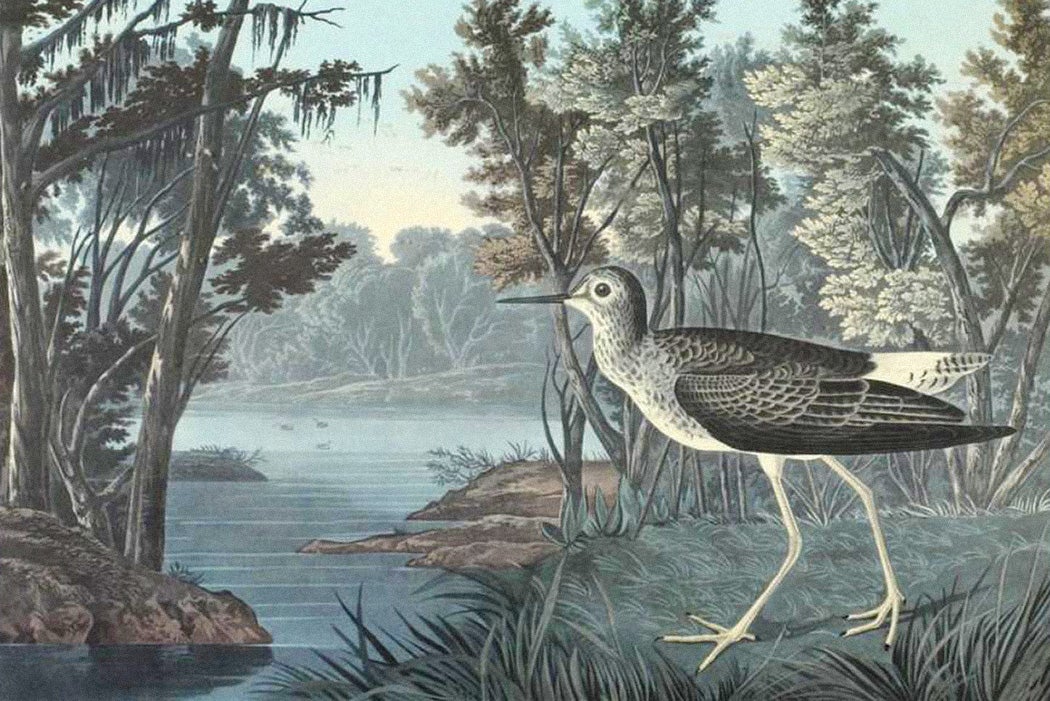In a recent Learning to Look column, we explored magazine covers and posters, trying to determine the creator’s intention. Examining the visual components of these artifacts, in conjunction with key framing information like associated text or time period, helped us uncover the deliberately crafted “meaning” of the pieces. The skills of visual analysis we learned in that context are useful even when the message of a visual object is less fixed and open to interpretation, such as with a work of fine art.
Imagine we’re walking through a museum together. Separated by time and space, we can do this together through JSTOR Collections such as the Wofford College Fine Art Collection. Now that we’ve spent several months together pulling apart the components of visual communication, you may be inclined to linger longer than you might have before, searching each artwork for more information and meaning.
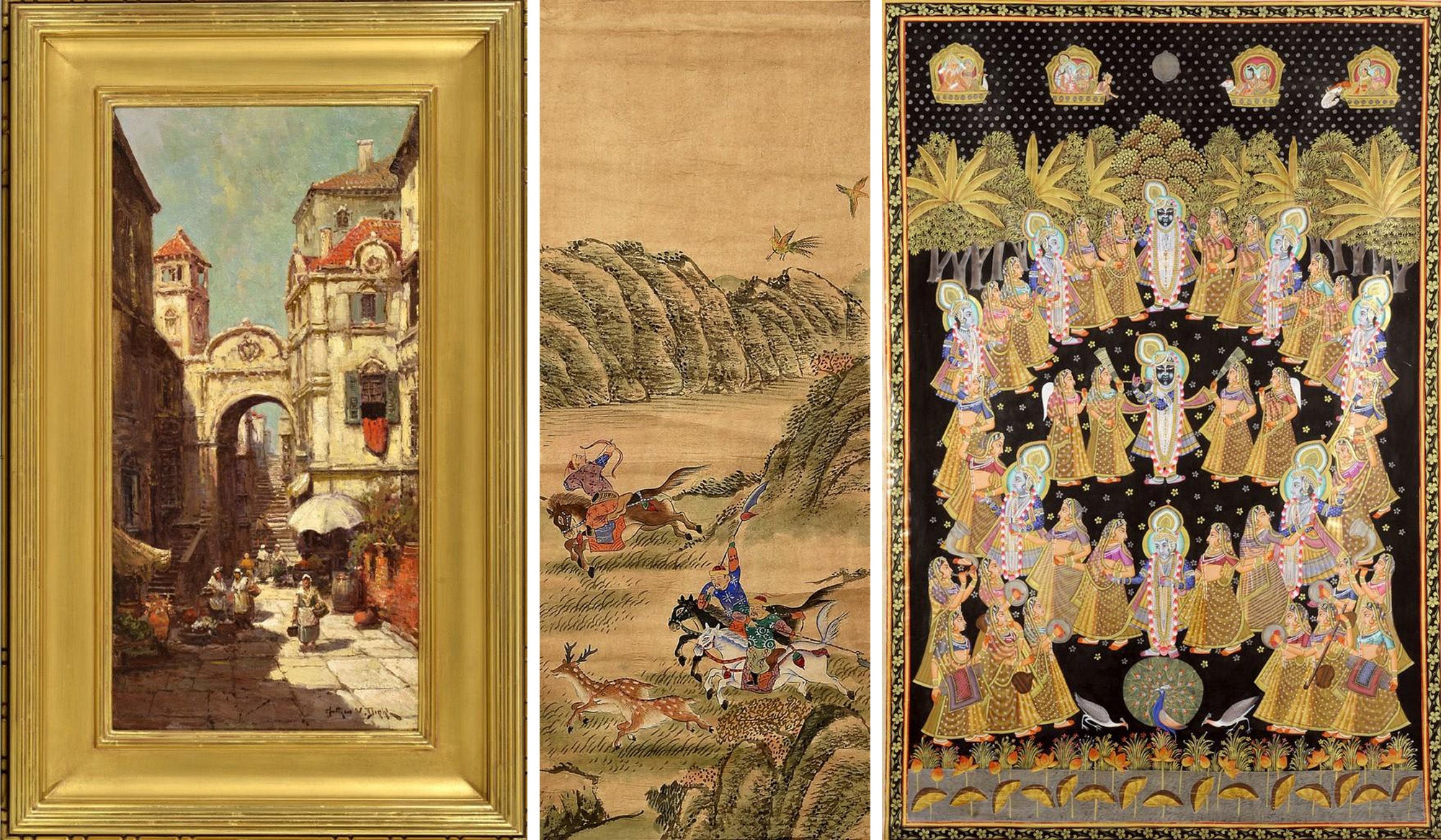
* * *
There are dozens of ways of looking at visual art, each shaped by the creators and the various contexts in which the pieces appear. None of them are wrong, but certain methods facilitate deeper connection and understanding.
In today’s column, we’ll explore two approaches to looking at art. First, we’ll follow closely the methodology we’ve explored in the column up to now. Then we’ll try another in which we’ll react naturally to a piece, then look again, revising our assumptions about what we see, until we come to an understanding. We can think of these as taking either a form-first approach or an intuitive approach. Neither of these strictly adheres to an analytical method you might find an art historian undertaking in an academic text. Instead, these are practical ways that you can informally but deliberately encounter works of art, thoughtfully observing and investigating your own visual experiences and eventually learning to talk about what you see with confidence.
Weekly Newsletter
If you are comfortable looking at art but wish to more deeply interrogate works and your response to them, an intuitive approach might feel more grounded. If, on the other hand, you do not consider yourself someone to whom probing a work of art comes easily, a form-first approach may give you the structure and confidence to confront art head-on.
* * *
Art critics in the early twentieth century primarily concerned with formalism, including Roger Fry and Clive Bell, were largely responsible for taking foundations of compositional analysis disseminated in the seventeenth century and transforming it into the language of formal analysis that we use to describe the elements of art and principles of composition. This vocabulary helps us break down the visual components of a work and examine their effects before exploring what we think we see and what may not be immediately apparent.
- Identify: How are elements of art (line, form, color, etc.) used?
- Describe: How does the composition work as a whole?
- Connect: How does what you see relate to what is known about the artwork’s subject, creator, historical context, etc.?
- Interpret: What might the work be expressing or communicating? How do you react to it?
When exploring and appreciating art for its own sake, there is no need to parse each element. In the print you see below, two elements stand out immediately: color and line. Pale blue, yellow, and grey dominate, though bits of red punctuate the scene. Line is used heavily to define shapes as well as give expression to the star of the show: the rain.
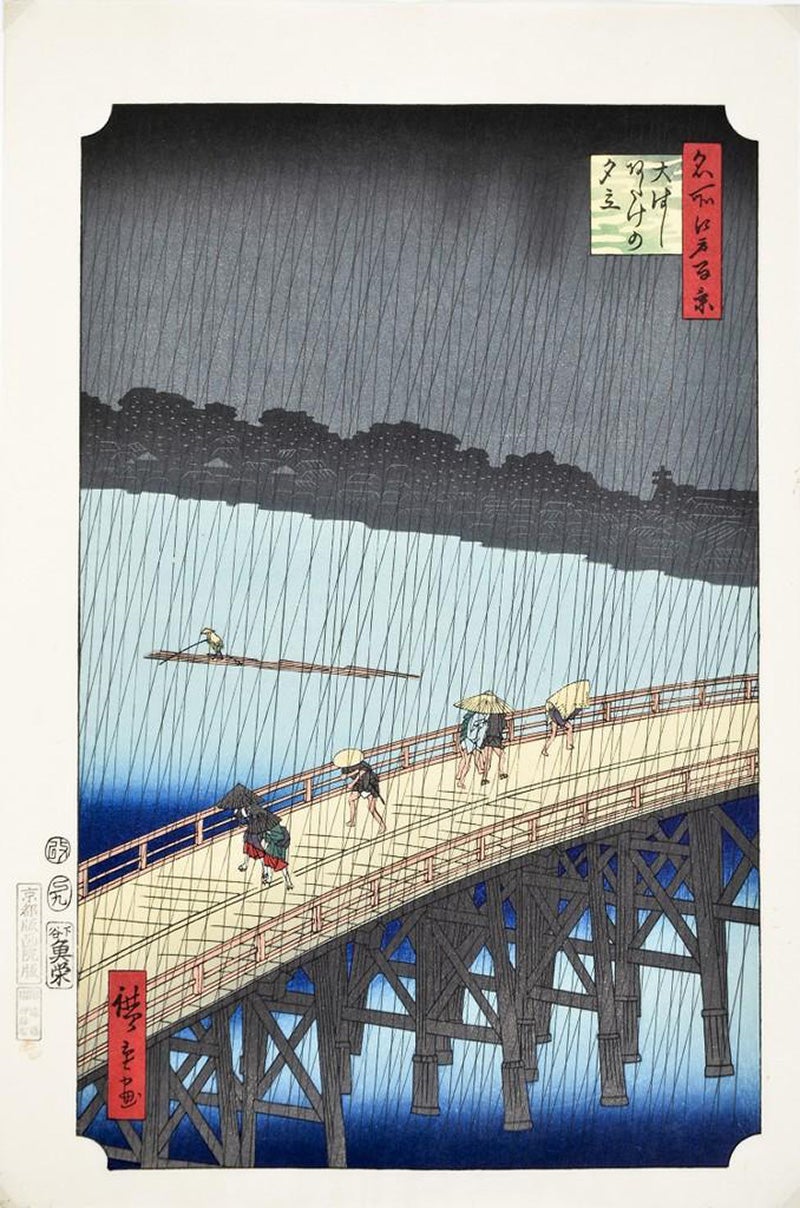
This composition is clearly split into distinct foreground, middle ground, and background, balanced by their approximately equal size and unified by the lines of rain that slash across the entire picture. Everything looks a bit off-kilter—the distant shore tips down diagonally while the bridge arcs up—but the triangular segments the forms create largely balance one another. Movement is suggested by these diagonals as well, especially as lines intersect and shatter the composition into slices and diamonds.
Context is easy to find for this image. Try searching within JSTOR. The creator, Andō Hiroshige, produced hundreds of Ukiyo-e woodblock prints like this one. As in many of these prints, the people are dwarfed by the landscape around them, and some techniques—like the fade from saturated to pale blue towards the bottom of the image—emerge as typical, even defining, elements.
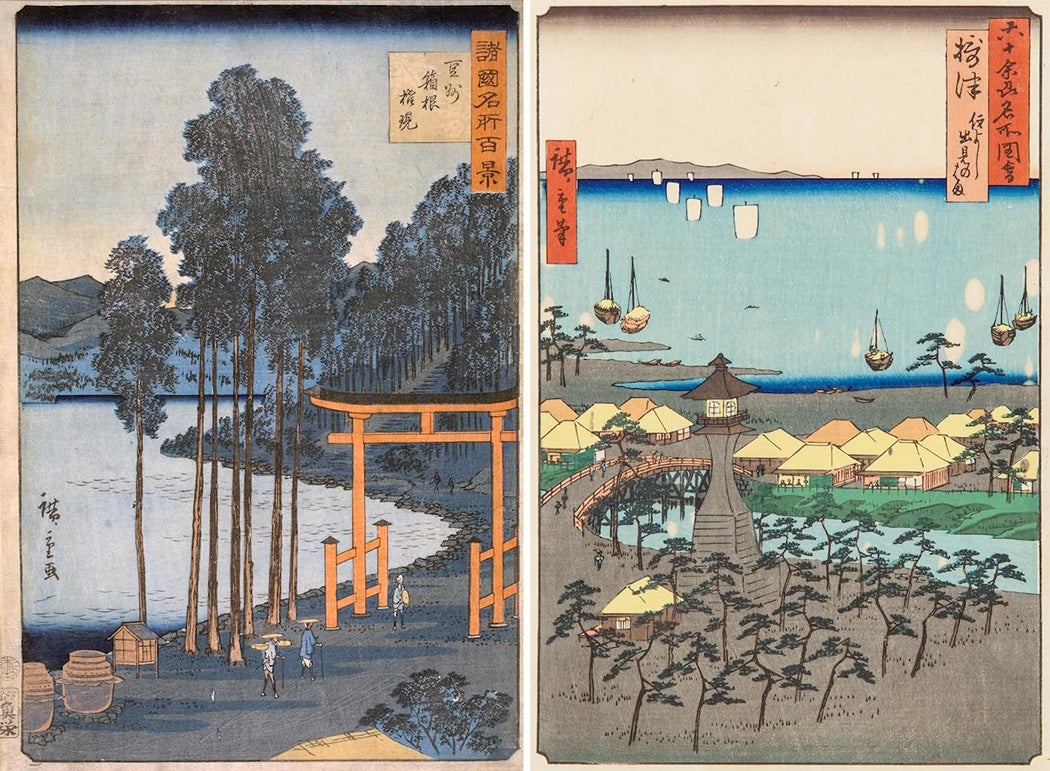
This Edo period print, while more than a hundred and fifty years old, feels modern. The graphic and concise visual elements certainly lend themselves to this, but this immediacy may also come from the subject matter: most of us can relate to the experience of the people on Shin-Ohashi Bridge. We can recall the licks of cold rain on our legs while grasping for a hat, umbrella, or jacket, anything to shelter under. Imagining this feeling, the uneasy diagonal lines and sharp edges start to make more sense.
Beginning with an identification of the formal elements of a work and description of their roles in the overall composition helps us orient ourselves within the bounds of the work of art. Having considered the parts as well as the whole, we can more confidently connect the visual components of an artwork to what lies across and beyond the page, connecting what we see with what we know but cannot observe within the frame. We then interpret the work, not necessarily pursuing an answer or conclusion but rather exploring what emerges, having stopped to gather information and consider it both in parts and as a whole.
* * *
Yet, as A Short Guide to Writing About Art declares from the bookshelf of every undergraduate, “It is now widely acknowledged that when we look, we are not looking objectively, looking with what has been called an innocent eye.” No matter how earnest the effort, no formal analysis is ever an objective observation of form alone. So, let’s set aside for a moment the methodology of formal analysis and try a different way of looking at art. This time, we’ll look not with innocent eyes, but with our own world-weary, subjective ones.
Rather than eschewing our overall judgements, let’s dive in. This works especially well with artworks like the one below, those without much information available beyond the work itself.
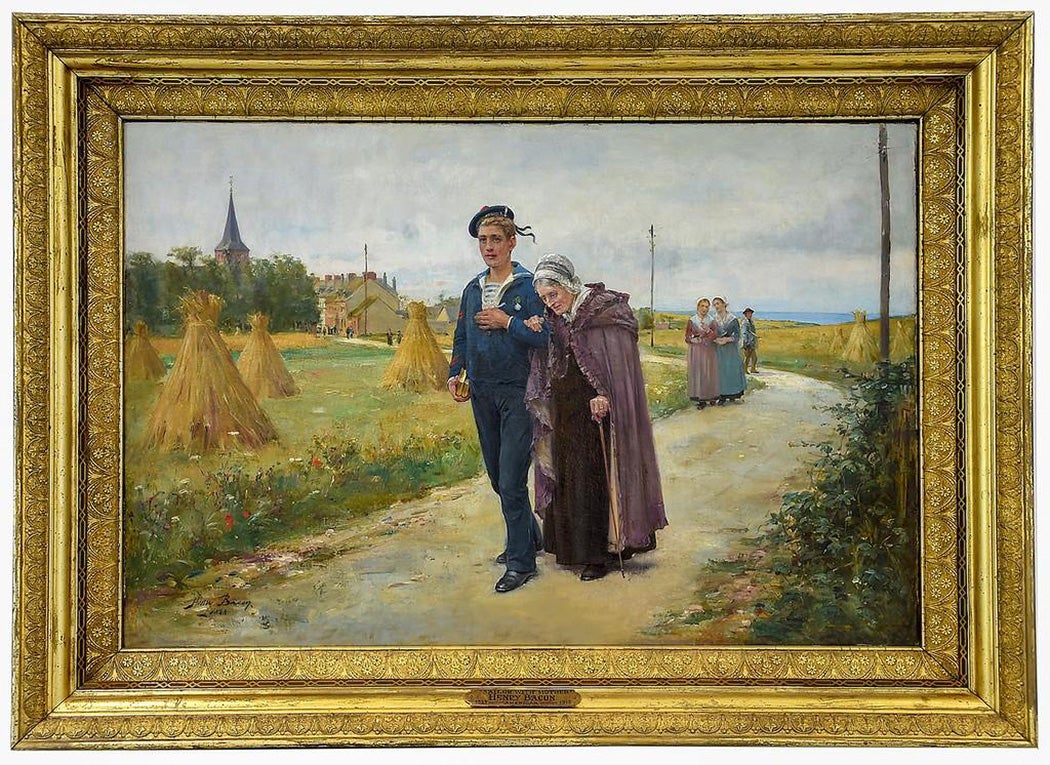
As I encounter this painting, I get a sense of quiet, familial closeness; maybe the central figures are headed home from a gathering as fall turns to winter in a seaside town.
After my observations, I can explore what prompted those initial assumptions. I inferred that it was winter based on the warm, muted colors. I noticed how both figures are walking in step with one another and how they almost become a single entity, their dark clothes nearly merging. This made me think the people must be very close. I noticed the blue on the horizon, assuming it was the sea, and buildings in the background, close enough together to be a town or maybe even a small city.
My initial reactions may not be accurate, though, so it’s time to dig into the details and any available context. Examining and appreciating works of art requires some effort. At the very least, you have to be open to new ideas and observations as they emerge. Consider, too, that when exploring a work of art, there is no correct—or even “best”—conclusion.
As I look more closely, I see that the central figures in this painting aren’t as alone as I initially thought. Two people are only a few paces behind on the path, also arm in arm, heads bowed together. On reflection, the central figures also don’t appear to be as close as their postures might suggest. The title reveals that they are mother and son, but other than the symmetry created by their linked arms, they actually seem quite distant from one another. The son, with a heavy brow, is looking at something outside the frame and seems no more interested in his mother than in the books he carries in his other hand. Meanwhile, his mother looks distractedly down towards the path. Even my guess that the picture depicts winter is probably not accurate: wildflowers and dark green foliage explode from either side of the path. The hay to the left and right of the figures looks freshly sheaved and sits atop still green fields, suggesting it’s more likely early summer.
My initial observations weren’t necessarily wrong, or not completely: familial closeness can take many forms, and it certainly does seem that the figures are walking away from town, leaving or maybe heading to some type of gathering. But reconsidering the image, I can see more depth, both in the central figures’ interaction and the world around them.
This time, we looked broadly and observed our reactions carefully, questioning and contextualizing them before comparing our initial assumptions to new information we acquired as we spent more time with the picture. By doing so, we centered our personal experiences of and interest in the work while exploring other possibilities through careful observation of the visual information available.
- Observe: What is your overall understanding of the image? What is your initial reaction?
- Question: Consider why you reacted this way. What made you think that?
- Contextualize: Do you see new details as you look more closely?
- Compare: How is your understanding of the image different now?
* * *
Visual literacy describes one’s ability to take informed steps to explore and evaluate visual material. In the previous eight columns, we’ve discussed a foundational component of visual literacy, visual analysis, and interpretation. Next time, we’ll begin exploring another: discovery and exploration. We’ll discuss how to seek out visual material, both known and new to you. In the meantime, keep an eye out for images that you don’t immediately understand. Does closer looking, mining the visual qualities for clarity and even meaning, help you better understand an image? While you wait, you could also catch up on the Learning to Look articles you missed.
